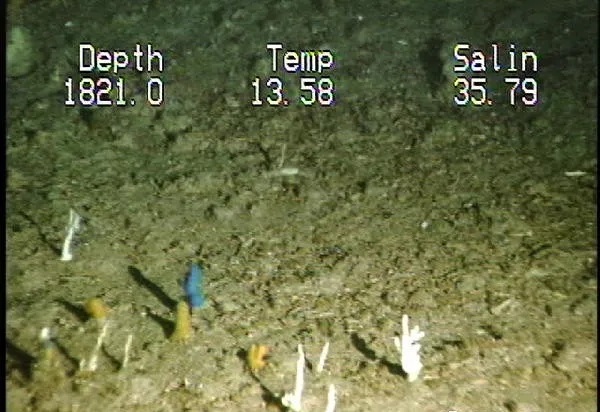Corals have long attracted the attention of scientists. It's an interesting organism with an equally interesting ecology. Coral reefs represent some of the most diverse, complex and fragile ecosystems in the world. Ecological and climatic variables, such as nutrient availability and water temperature, have a large impact on coral growth.
Much of coral research has focused on understanding how corals grow, how corals interact with other organisms, and the impact of human activity on reef health. Another important but less well-known study is exploring the way corals act as "recorders" during growth. The calcium carbonate skeleton left behind by the organism contains data on these environmental variables that influence coral growth. Thus, information about ancient climate and ecology can be learned from ancient corals.
Bones leave a record of growth
Corals are actually very small soft-bodied organisms that secrete the hard skeletons we see. As corals grow, they leave behind their old skeletons and grow a new skeleton on top of them. These ancient skeletons are preserved under living coral, leaving a record of growth. Shallow-water corals often form huge reefs as they grow, aided by symbiotic algae and tropical sunlight. Deep-sea corals produce fewer skeletons and survive in cold, dark waters by feeding on excess nutrients.

Small coral colonies like these are often found in the hard bottom areas of the Blake Plateau, which are located in the rapids of the Gulf Stream. The chemical composition of these small, tough corals, along with surrounding coral rubble and fossil corals, can reveal the history of temperature changes at the Blake Plateau.
Corals that grow in shallow tropical waters are relatively easy to observe and study, but deep-sea corals are harder to observe. Even simple measurements like growth rates are harder to make.
Growth rate is a key variable in our understanding of coral ecology. By measuring growth rates, we can unlock what corals have taught us in past climates. (Additionally, deep-sea corals are now increasingly affected by human activity, so it is increasingly important that we understand how our actions affect these organisms.) Since we cannot observe deep-sea corals in their natural habitats for long periods of time, we must take Other methods to determine growth rate. One way to do this is to mark the size of the coral (without destroying it), let it sit for a while, and come back to see how much it has grown.
Fortunately, corals leave their mark as they grow, just like trees do. To take advantage of these growth points, or "increments," we must determine how long they actually represent. Determining the growth rate is fairly straightforward once we know it. However, this method is not practical for deep-sea corals.
Unlock a chemical image
One method we use to determine growth rates is to analyze the chemicals locked into the coral skeleton. Some aspects of coral chemistry are controlled by variables such as water temperature. In some deep-sea environments, such as the Charleston Bulge, temperatures vary over time throughout the year. Therefore, the chemical composition of the skeleton may be recorded for a year, and we can measure the growth rate of these corals.

Scientists cut small coral fragments across, looking for visible growth lines. We can correlate these lines with changes in chemical composition and determine whether changes in growth rates are related to water temperature.
We observed many different coral growth patterns on the Blake Plateau. Hard surfaces are often covered, to some extent, with small "twigs" of coral, each just a few centimeters high. Some areas have many corals tightly clustered together, some areas have only a few widespread corals, some large bush-like corals cover the bottom, and some areas have no corals at all.
None of these patterns can be random, and just knowing how fast these corals grow, we can determine the most important factors controlling the development of these different growth habits.
uncertain future
An unfortunate variable affecting the growth habits of deep-sea corals in other parts of the world is the use of fishing methods, where some equipment is dragged to the bottom and destroys large areas of coral. How long can corals recover from these disturbances? When do coral ecosystems return to these areas after being disrupted? Simple age measurements are critical to answering these questions and understanding these processes.
Some of the places we've looked at on other expeditions include the skeletons of some corals that appear to have died long ago. By studying the chemical records of these ancient corals, we hope to unlock clues about the ecosystems and climates of the times in which these corals lived. These long-dead corals may shed light on how local and global climates have changed over time. Much of the information on past climates comes from shallow records of tropical corals. Deep-sea corals may have recorded similar changes.
---Fred Andrews Department of Geology University of Alabama